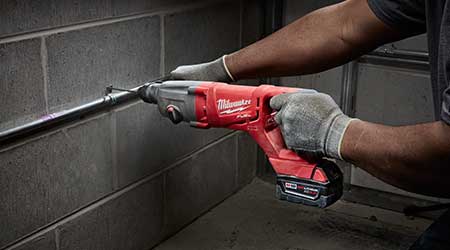Brushless Motors Enhance Efficiency of Power Tools
Part 2 of a 3-part article on power tool advances
The biggest breakthrough in power tool motor efficiency is the development in the early 2000s of the brushless motor, which offers users the appeals of less maintenance and increased performance life compared to a conventional brushed motor.
The fundamental difference between a brushed and a brushless motor is the connection to the power source. Brushless provides a more direct connection to the power source and decreases wear and tear on the motor, says Paul Fry with Milwaukee Tool.
“My impression is most people are still digesting, ‘What does brushless mean?’” Fry says. “Brushless can mean a lot of things, but it’s only as good as the system that surrounds it. It’s a fundamental breakthrough in motor technology compared to the carbon-brushed units that have been used for decades in the power tool world.”
Brushless does come at a higher cost.
“You can get a certain amount of efficiency out of (brushless tool), but like everything else, it comes with a cost,” Holister says. “From our own perspective, although we adopt and use brushless motors where we deem it necessary for the performance of the tool and the application, I think it would be interesting to hear how people are taking into account the efficiency gains for the cost that it induces in the tools.”
Related Topics:












